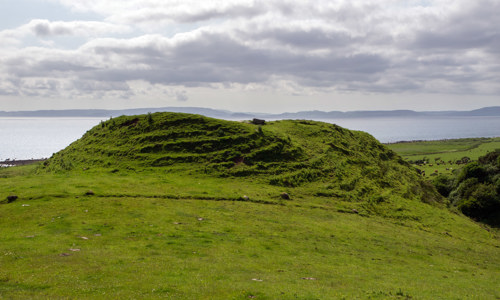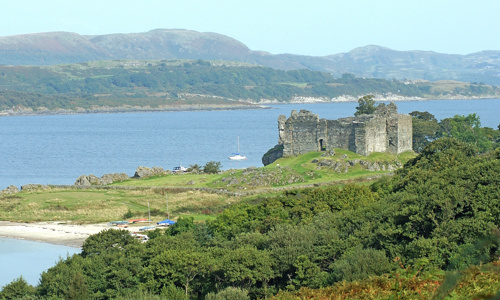History
Skipness Castle dates to the early 1200s and was probably built by either Clan MacSween founder Suibhne (Sven) ‘the Red’, or his son, Dugald.
It was rebuilt several times over three different centuries, and as such it offers a snapshot of the variation in form of Scottish castle architecture between the 1200s and 1500s.
The MacSween castle consisted of:
- a modest two-storey hall-house
- a chapel, dedicated to St Columba
Due to extensive rebuilding, the remains of these buildings are difficult to spot, but they’re worth the effort. They are among the oldest standing castle buildings in Scotland.
Skipness was the MacSweens’ secondary residence. Their chief seat was at Castle Sween, which was built before 1200 and is today one of the oldest stone castles in Scotland. They also built the hall-house castle at Lochranza. Skipness and Lochranza flanked the Kilbrannan Sound, protecting MacSween interests.
End of the MacSweens
Norway ruled Argyll in the 1200s, but the Norse’s days here were drawing to a close – in 1263, Hakon IV was defeated by the Scots at the Battle of Largs. Three years later his successor returned rule of the Hebrides to Scotland in the Treaty of Perth. The MacSweens, who backed Norway, were forced out.
By the end of the century, the MacDonalds had control of Skipness. Scotland and England were locked into the Wars of Independence, and the MacDonalds initially backed England.
The MacDonalds rebuilt Skipness as a formidable stronghold in about 1300, possibly with English support. Their works included:
- the construction of the new chapel by the shore, which is surprisingly well-preserved
- the incorporation of the chapel and hall house into an impressive residence
- construction of a stone curtain wall to enclose the new buildings, bristling with arrow slits and topped with a notched parapet wall
The Campbell legacy
The MacDonalds held Skipness until their downfall in 1493, and in 1502 it was granted to the Campbell earls of Argyll.
The Campbell’s completed the conversion of the buildings to a tower house. They heightened the tower and removed courtyard buildings to leave it free-standing on its south side.













